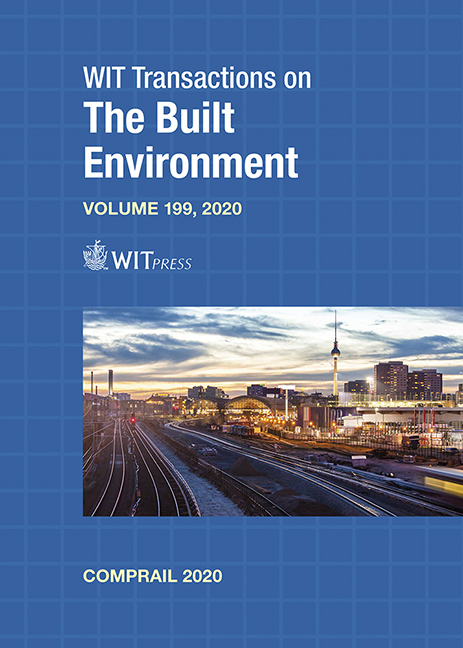SPEED TRAJECTORY OPTIMIZATION FOR A HIGH-SPEED TRAIN
Price
Free (open access)
Transaction
Volume
199
Pages
12
Page Range
261 - 272
Published
2020
Paper DOI
10.2495/CR200241
Copyright
WIT Press
Author(s)
ZHUANG XIAO, ZINING ZHAO, QINGYUAN WANG, PENGFEI SUN, XIAOYUN FENG
Abstract
The high-speed railway system has been a significant energy consumer due to the rapid increase of operation mileage and speed. Eco-driving is a promising method to reduce energy consumption, which aims at calculating speed profiles with minimization electric energy consumption under temporal and spatial operation constraints. Cruise control is regarded as the most energy-efficient control strategy when the cost function is the mechanical energy on wheels or the efficiency of traction drive system is simplified as a constant value. However, the efficiency of the traction drive system is varies among different traction force and speed pairs. This paper presents an eco-driving cycle computation problem for high-speed trains considering nonlinear loss of traction drive system. On basis of this model, the “traction-and-coasting” driving strategy is proposed to replace the cruise mode, and corresponding bi-level optimization algorithm is designed. The energy saving performance is investigated by comparing optimized results with the solution based on cruise control. Numerical simulation results illustrate that the traction energy consumption can be reduced by the proposed strategy, and the operation efficiency of the traction drive system can be improved. The economy significance of this method is illustrated and analyzed. For application, the proposed method can be used for a driver assistant system (DAS) or an automatic train operation (ATO) system, which can significantly improve the energy economy of the high-speed railway.
Keywords
high-speed railway, eco-driving, energy calculation, driver advisory system





